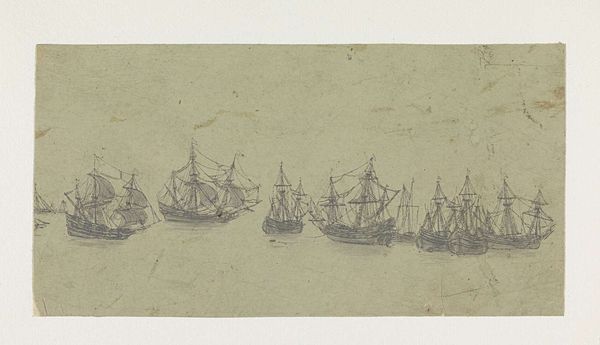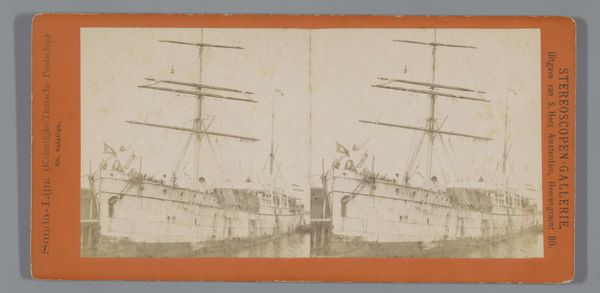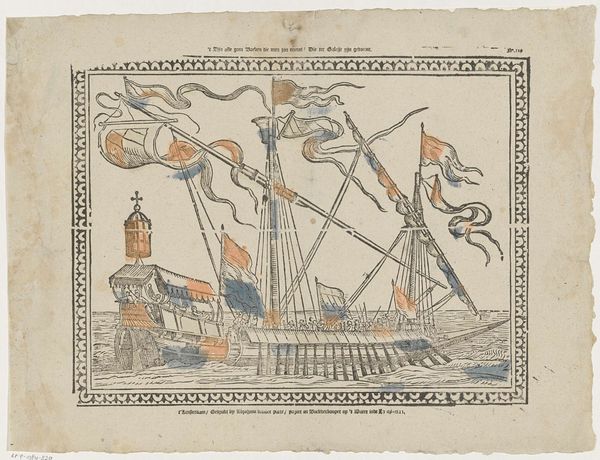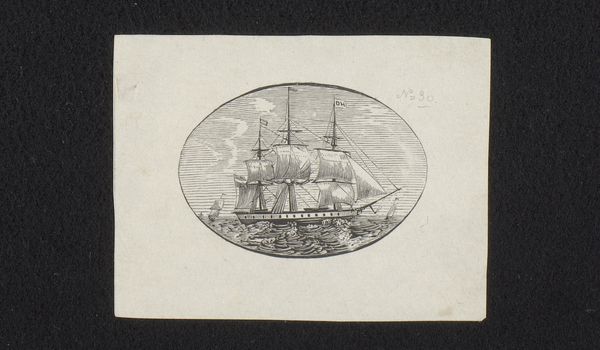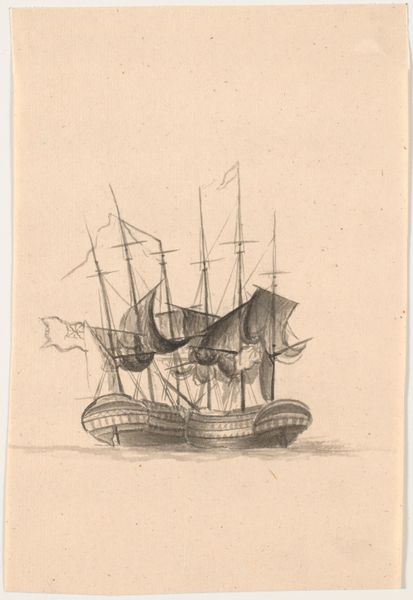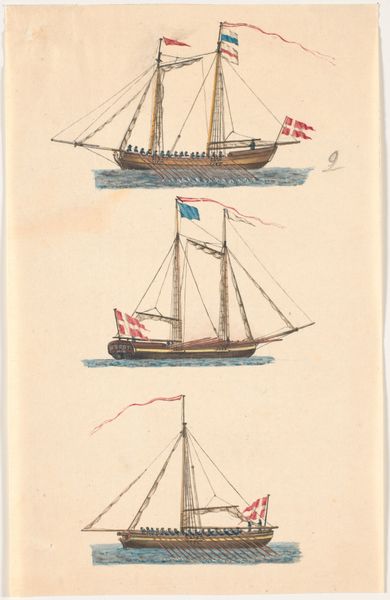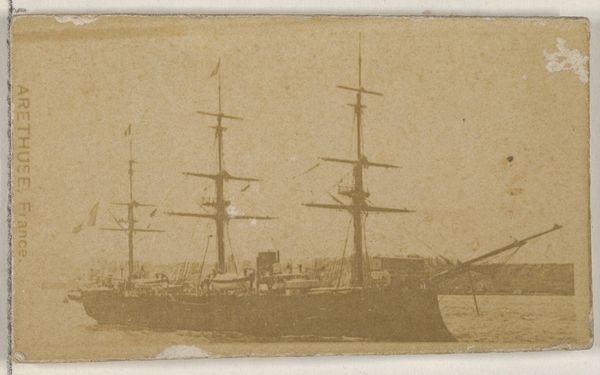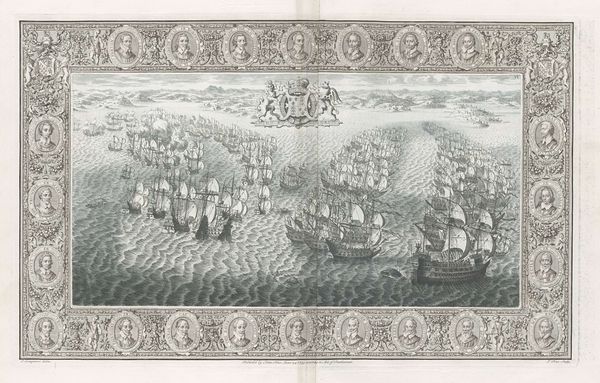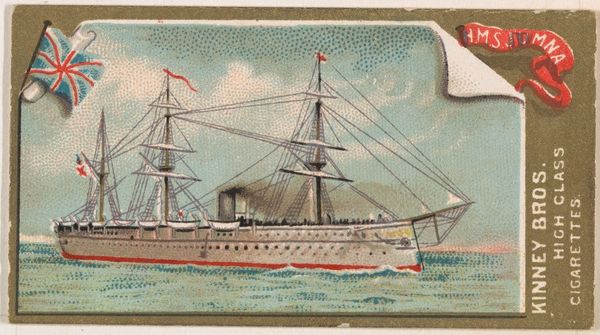
drawing, watercolor
#
drawing
#
water colours
#
landscape
#
watercolor
#
coloured pencil
#
line
#
genre-painting
#
watercolor
Dimensions: width 63.5 cm, height 7 cm, depth 44.5 cm, length 34 cm, width 6 cm
Copyright: Rijks Museum: Open Domain
Editor: We're looking at "Doggersbanklint," a watercolor and ink drawing from after 1781, by an anonymous artist. It’s currently housed in the Rijksmuseum. I’m struck by the uniformity of the ships; they seem almost like a fleet of toy boats. What story do you think this piece tells? Curator: It's fascinating how the repetition, at first glance, might seem simple or even naive, right? But, considering the socio-political context of the late 18th century, especially the naval conflicts and colonial ambitions of the Dutch Republic, this image reads rather differently. Those seemingly uniform ships – they represent power, control, and the projection of dominance across waters. How do you see the placement of the Dutch flag, repeated across the fleet? Editor: That's an interesting point, I see the flags. Now, looking at the flags again, there is this underlying symbolism about nationalism and power. Is it then glorifying Dutch maritime power, or could there be something else at play? Curator: Precisely! It’s about unpacking that potential glorification. Think about the resources these voyages consumed, the lives impacted through trade and warfare. What do the individual lives of sailors mean in the grand scheme of Colonial commerce? Were these always celebrated narratives, or were there also silences, resistance, or suffering glossed over? Does that shift your reading of the image at all? Editor: Yes, that does shift my understanding. It goes from just a decorative scene to a picture of economic imperialism, with a clear cost in human lives! Curator: Exactly. And thinking about artistic agency, what does it mean for the artist to depict this fleet, during this period? Are they participating in a specific historical narrative, or are they passively recording one? Perhaps there's a more complicated message encoded into the aesthetic choices made. Editor: This really made me consider what stories might lie behind what seems like an innocent fleet scene. I won’t look at a maritime painting in the same way. Curator: Absolutely. By viewing historical artworks as documents deeply embedded in broader historical discourses and political power relations, we start revealing stories that are complex and nuanced.
Comments
No comments
Be the first to comment and join the conversation on the ultimate creative platform.
